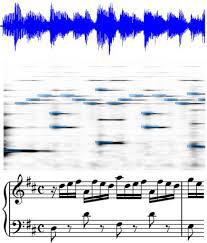The Chamber Ensemble Generator: Limitless High-Quality MIR Data via Generative Modeling
Data is the lifeblood of modern machine learning systems, including for those in Music Information Retrieval (MIR). However, MIR has long been mired by small datasets and unreliable labels. In this work, we propose to break this bottleneck using generative modeling. By pipelining a generative model of notes (Coconet trained on Bach Chorales) with a structured synthesis model of chamber ensembles (MIDI-DDSP trained on URMP), we demonstrate a system capable of producing unlimited amounts of realistic chorale music with rich annotations including mixes, stems, MIDI, note-level performance attributes (staccato, vibrato, etc.), and even fine-grained synthesis parameters (pitch, amplitude, etc.). We call this system the Chamber Ensemble Generator (CEG), and use it to generate a large dataset of chorales from four different chamber ensembles (CocoChorales). We demonstrate that data generated using our approach improves state-of-the-art models for music transcription and source separation, and we release both the system and the dataset as an open-source foundation for future work in the MIR community.
PDF AbstractDatasets
Introduced in the Paper:
 CocoChorales
CocoChorales
Used in the Paper:
 MAESTRO
MAESTRO
 MusicNet
MusicNet
 URMP
GuitarSet
URMP
GuitarSet
 JS Fake Chorales
JS Fake Chorales



